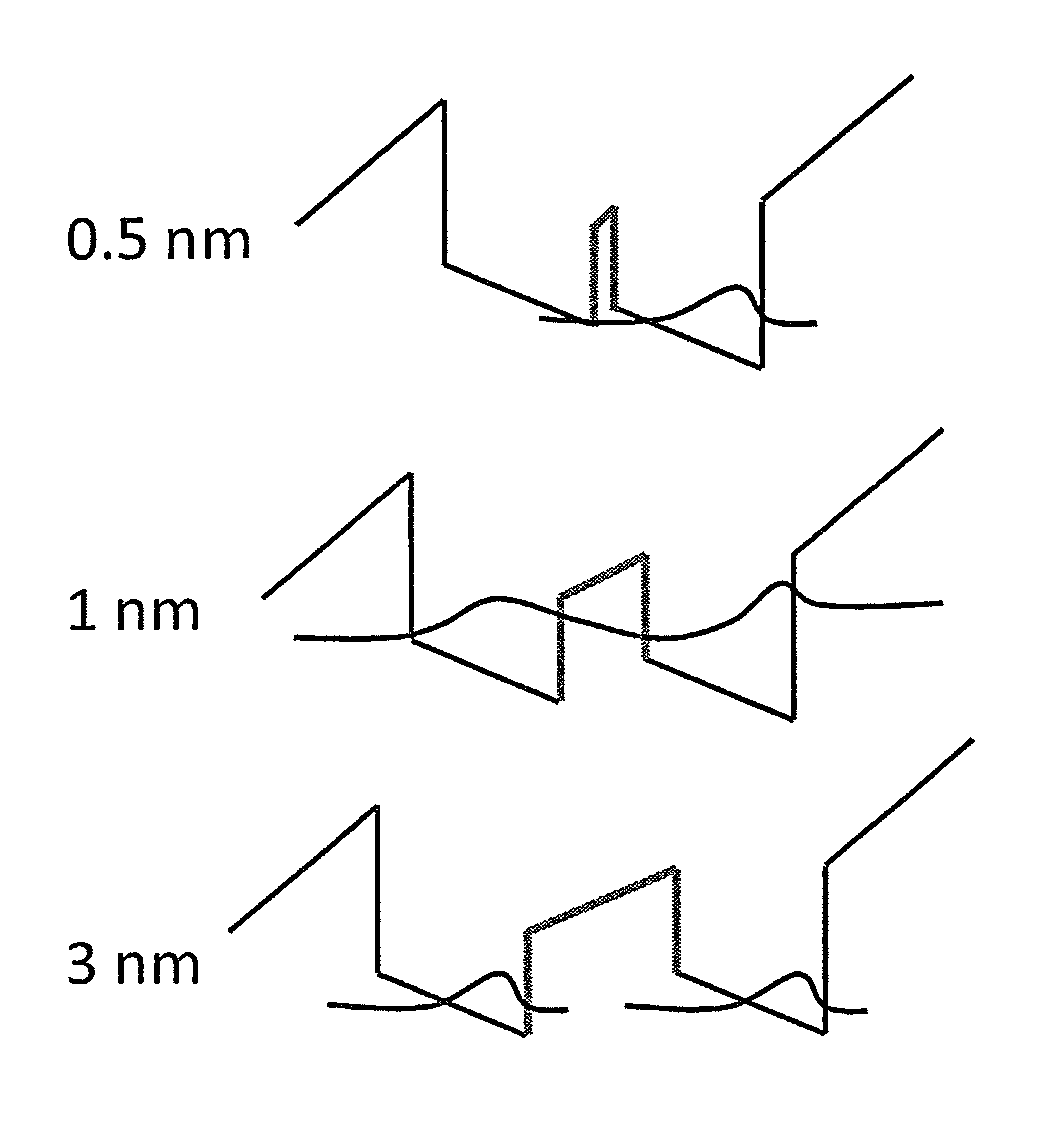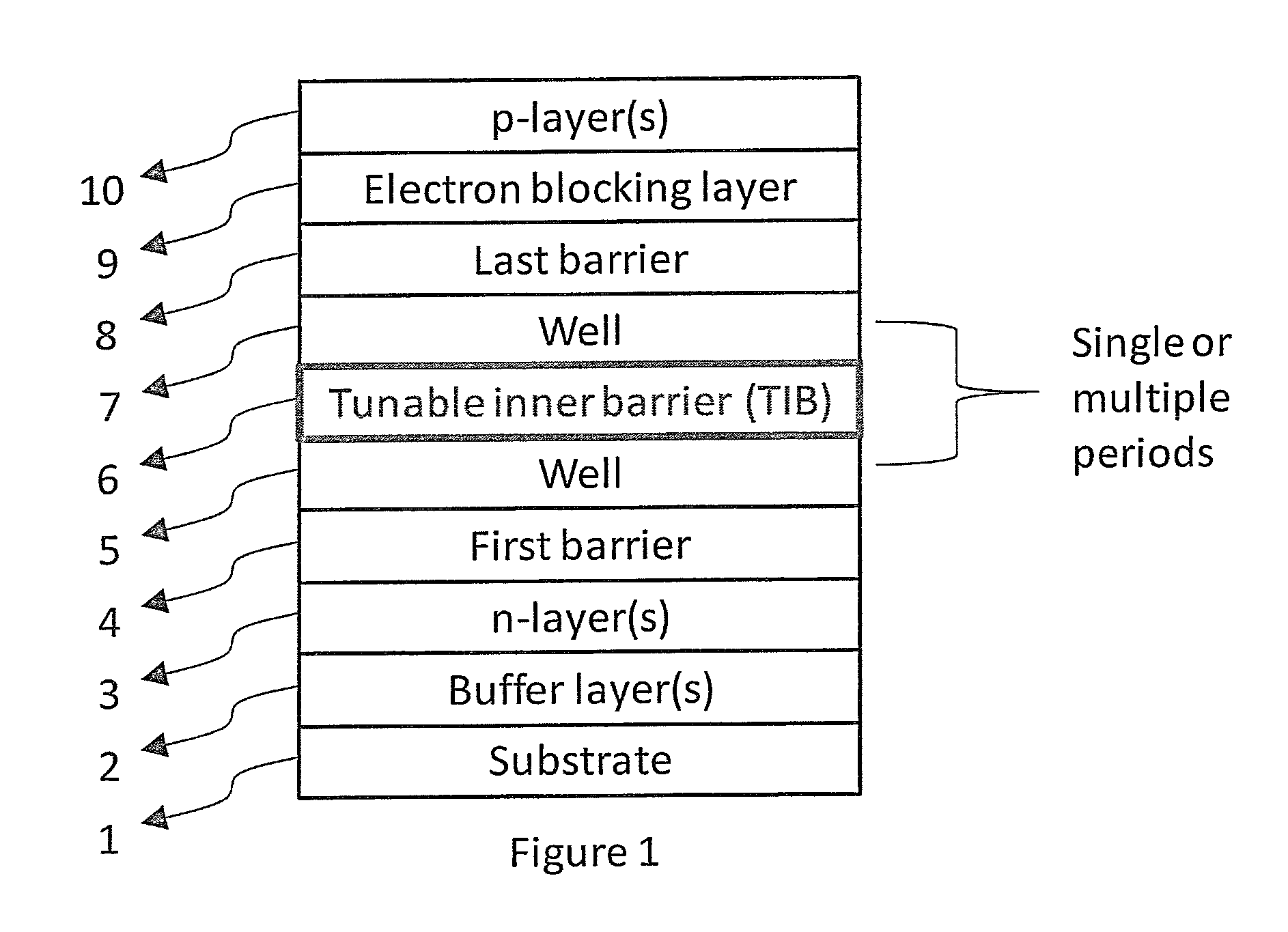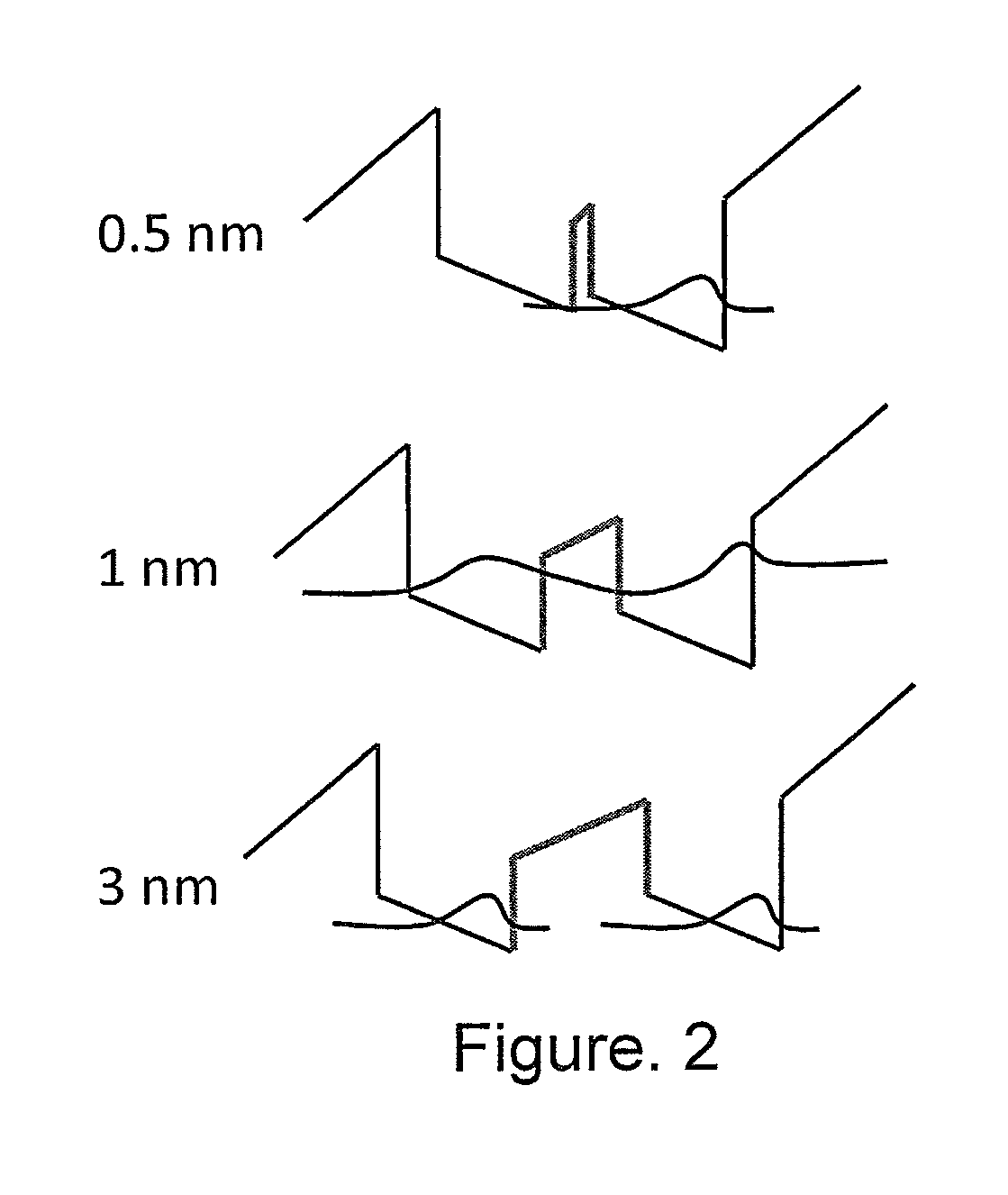Ultraviolet light emitting diode structures and methods of manufacturing the same
a technology of ultraviolet light and diodes, which is applied in the field of ultraviolet light emitting diodes and manufacturing methods of the same, can solve the problems of reducing the efficiency droop of leds under high current injection, and achieve the effects of reducing efficiency droop, improving overall external quantum efficiency, and improving overlap of electron and hole wave functions
- Summary
- Abstract
- Description
- Claims
- Application Information
AI Technical Summary
Benefits of technology
Problems solved by technology
Method used
Image
Examples
example 1
Effect of Tunable Barrier Layer Thickness on EQE and Output Power
[0073]In this example, results are presented for a series of 280 nm band deep UV LEDs fabricated using identical epitaxial design except for the thicknesses of the TIB layer, which was varied. The epitaxial design of these LEDs is schematically shown in FIG. 4. The AlN mole fraction of the MQW well and barrier layers were within the ranges specified in Tables 3 and 4.
[0074]The TIB layer fabricated with Al0.8Ga0.2N was inserted between two well layers, each having the same AlN mole fraction and fabricated with Al0.65Ga0.35N. The TIB layer had the same AlN mole fraction as the first / last barrier layers and, therefore, only the thickness of the TIB was varied. This allowed investigation of the optimal thickness to reduce efficiency droop of the UV-LED.
[0075]Four UV-LEDs were made with the epitaxial structure shown in FIG. 4, but with different thicknesses of the TIB layer. The thicknesses were 0.5 nm (sample V2769-D), 1 n...
example 2
Effect of Tunable Barrier Layer Thickness on Emission Spectrum
[0080]The emission spectra of the 4 LEDs with different TIB layer thickness described in Example 1 was investigated. The results are shown in FIG. 7. As the TIB layer thickness was reduced from 3 nm to 1 nm, a slight red-shift in the emission spectra was observed. However, when the TIB thickness was reduced to 0.5 nm, wave-function delocalization took place, and strong QCSE further red shifted the emission spectrum by 5 nm.
example 3
Effect of Tunable Inner Barrier Layer Optimization on High Current Density Operation
[0081]Comparing UV-LEDs with multiple quantum wells separated by TIB barrier layers (V2769-C, devices B2, E1 and B1) to enhance carrier transport and wave-function overlap to a single quantum well UV-LED (V2706, devices B, C, and D), it was discovered that the UV-LED with a tuned inner barrier layer could be driven at much higher current density than a single quantum well LED without power output saturation (FIG. 8). This is indicative of the ability of the UV-LED with a tuned inner barrier layer to spread the injected carriers across the multiple quantum wells (two wells in this case). Therefore, at the same drive current the carrier density in the well was lower than for single quantum well UV-LEDs.
PUM
 Login to View More
Login to View More Abstract
Description
Claims
Application Information
 Login to View More
Login to View More - R&D
- Intellectual Property
- Life Sciences
- Materials
- Tech Scout
- Unparalleled Data Quality
- Higher Quality Content
- 60% Fewer Hallucinations
Browse by: Latest US Patents, China's latest patents, Technical Efficacy Thesaurus, Application Domain, Technology Topic, Popular Technical Reports.
© 2025 PatSnap. All rights reserved.Legal|Privacy policy|Modern Slavery Act Transparency Statement|Sitemap|About US| Contact US: help@patsnap.com



